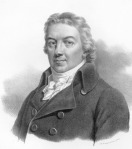Rolaids is back, with ‘survey’ results to bolster its return
 Yesterday, Sanofi Canada issued a news release announcing that “iconic brand Rolaids is back,” and not a moment too soon because the drug company commissioned an Ipsos survey that showed – quel surprise! – that the January-to-March period is “heartburn season”!
Yesterday, Sanofi Canada issued a news release announcing that “iconic brand Rolaids is back,” and not a moment too soon because the drug company commissioned an Ipsos survey that showed – quel surprise! – that the January-to-March period is “heartburn season”!
The news release presents the results of the ‘research’ in detail, but fails to remind us when and why Rolaids ever left us. The release did remind us that, as a commercial several years ago claimed, the spelling of ‘relief’ is remarkably similar to the spelling of the brand name, and that not only is Rolaids back, but Sanofi is the new owner of the brand. Continue reading →
Requiem for investigative reporting in Canada?
 Layoffs and the threat of layoffs among Canadian journalists may be compromising investigative reporting in this country.
Layoffs and the threat of layoffs among Canadian journalists may be compromising investigative reporting in this country.
That was suggested by Sean Holman, assistant professor of journalism at Mount Royal University in Calgary and a former syndicated columnist and legislative reporter for 24 hours Vancouver and the Vancouver Sun.
Holman’s take on this issue in his blog “Unknowable Country” was prompted by the recent news that Postmedia (which publishes the National Post, Calgary Herald, Ottawa Citizen and others) laid off five parliamentary bureau staff. In an internal memo, Postmedia said manager Christina Spencer and the remaining four staff members would be joining the Citizen to create a “strong political desk based out of the Citizen,” according to J-Source. Continue reading →
Statistics made palatable
 Until journalism schools require that students take a course in probability and
Until journalism schools require that students take a course in probability and sadistics statistics—and find the special kind of people to teach those of us who are not naturally drawn to math-related subjects—most journalists will struggle with numbers.
There’s no dearth of statistics texts and other books that claim to be user-friendly and and serve not so much teach readers how to perform statistical analyses but to clearly explain them conceptually.
But damn few live up to that promise.
I just read in yesterday’s New York Times Book Review (NYTBR) that just such a book, published last year, is now available in paperback. It’s aptly titled Naked Statistics: Stripping the Dread from the Data by Charles Wheelan. Continue reading →
Word Watch: Fascinoma
 The New Republic magazine’s “Jargonist” must have been hard up for a post when she decided to tackle “fascinoma.” She traces its source to at least 1978, when it appeared in Samuel Shem’s book House of God. Which may be why she listed as those who use it: “internists, brown-nosing residents and doctors over 60.”~TM
The New Republic magazine’s “Jargonist” must have been hard up for a post when she decided to tackle “fascinoma.” She traces its source to at least 1978, when it appeared in Samuel Shem’s book House of God. Which may be why she listed as those who use it: “internists, brown-nosing residents and doctors over 60.”~TM
Write like Hemingway
Ernest Hemingway’s prose style has been described as “spare and economical,” or “terse” by those not so generous.
Now you, too, can write like Hemingway with a new namesake app.
Just surf over to www.hemingwayapp.com, write some text, click on “edit” and your work will be sliced, diced and graded in order to make it “bold and clear.” Continue reading →
What does pain relief look like? (Win a prize!)
Dr. Roger Freeman (DDS) and his crew at Infectious Awareables are looking for help in coming up with a graphic representation of pain relief.
You could win “unimaginable treasures.” (At least, that’s what Dr. Freeman says.)
Since 1997, Infectious Awareables (IA) has been in the business of combining fasion and health education. The company designs and sells silk ties, silk scarves, bow ties and boxers bearing colourful electron micrographs of pathogens of public health interest (the fashion part) with tags that provide brief health information (the education part). Continue reading →
What, exactly, is journalism?
This question is not as simple as it may appear, and its answer is needed now more than ever.
So argues Ivor Shapiro, chairman of the School of Journalism at Ryerson University in Toronto in a recent article in Journalism Studies (February 2014).
He points to “today’s rapidly democratizing news ecosystem” in which the lines have become increasingly blurred between journalists and the consumers of journalism, and between journalists and their comedic counterparts such as Jon Stewart. Continue reading →
Are you reading a news story — or a barely-rewritten press release?
 Have you ever read a purported news story that sounded suspiciously like a press release?
Have you ever read a purported news story that sounded suspiciously like a press release?
Now, the The U.K.’s Media Standards Trust has updated its tool for determining how close that story is to a news release.
The tool is called “Churnalism” and is available at churnalism.com. It’s a browser extension for Chrome and Firefox. Called a “churn engine,” it runs in the background to distinguish journalism from “churnalism” (about which, more in a minute). It operates while you’re reading a news story or you can go to the Churnalism site and enter a URL or some text to determine how closely the story matches a news release — if at all — as well as where the “churn” comes from and it will display the churned text. Continue reading →
Word Watch: anti-vaxxer
Canadian Paul McFedries tracks new words as they enter the language on his Word Spy website. In mid-December, he noted “anti-vaxxer,” which of course is a person who refuses to have his or her children immunized, fearing that vaccines are harmful.
According to McFedries, the earliest use of “anti-vaxxer” was in 2004 in a comment on mothering.com. Continue reading →



